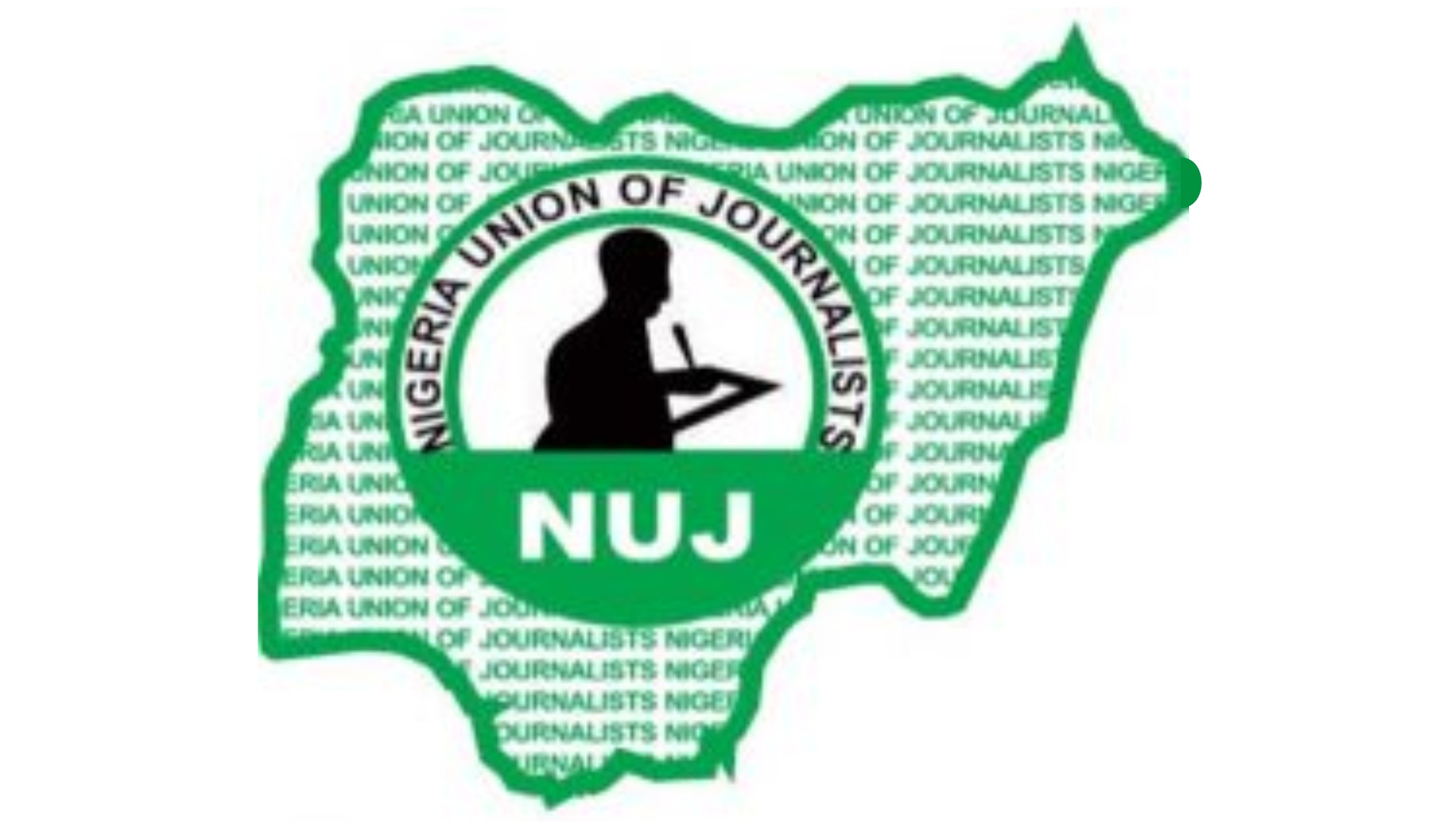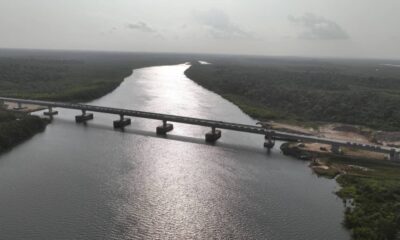Stock/ Money
UBA Partners Gabon, CODER On Power Projects
In demonstration of its capacity to support infrastructure development projects in Africa and undertake major project financing, United Bank for Africa Plc (UBA), through its subsidiaries – UBA Gabon and UBA Capital (Africa), is collaborating with, Company for the Development of Renewable Energy (CODER) and Gabon’s Ministry of Energy in the construction of a 36 mega watts (mw) hydro power generating plant in the central Africa nation.
UBA Capital (Africa), the investment banking arm of UBA Group, on the continent, the financial adviser to CODER, in the power project to be built on the FE 2 Dam, at the river Okano in the northern part of the country.
The 36MW Hydro Power Project and a sister project at Imperatrice Dam, also a CODER project, are expected to stimulate economic activity in the oil rich Gabon and help towards poverty alleviation. It is part of a 30-year concession package on electricity generation, negotiated by CODER with Gabonese Government in May 2010.
The participation of UBA Group in the projects are in furtherance of the group’s infrastructural development initiatives across Africa, and in line with its increasing involvement in big project financing and advisory services across the continent. The electricity projects estimated to cost about USD234 million has a completion time of 30 months.
The ground breaking ceremony of the FE 2 project, the first of the two projects was performed recently by the Gabonese President Mr Ali Bongo Ondimba and witnessed by the officials of CODER and UBA Gabon. The project is part of the 30 year concession package negotiated by CODER with Gabonese Government.
Rasheed Olaoluwa, CEO, UBA Africa said the bank’s participation in the projects comes on the heels of a recent conferment of “Financial Institutions Gold Award” on UBA by Africa Import and Export Bank (Afreximbank) for its role in financing and expanding inter African trade and project financing. It also follows the €234m oil and gas financing deal with Societe Africaine de Raffinage, the national refinery of Senegal.
Olaoluwa said that the involvement of UBA Gabon in this project underscores the increasingly important roles being played by UBA Group and its subsidiaries in funding infrastructure development on the continent. “We are adequately positioned to support private and public institutions to activate growth and development in Africa, whether in infrastructure finance, trade expansion or financial advisory services,” Olaoluwa said. He reiterated the Bank’s resolve to partake in similar projects in other countries of our operation.
United Bank for Africa Plc is one of Africa’s leading financial institutions offering banking services to more than 7.5 million customer accounts. With operations in 17 African countries and presence in London, New York and Paris, UBA is able to intermediate in funding, investment, trade flows and advisory services within the continent and beyond
Banking/ Finance
How to deal with unexpected summer costs
Have fun saving money over lockdown, did you?
Sure, the distinct lack of expenditure over the past 15-16 months have been great, but things arestarting to get back to normal.With a return to normality,you’ll probably find your day-to-day spending is steadily rising to where it was before.
The next few months are set to be interesting ones from a budgeting perspective. Many rescheduled social events like weddings, stag and hen dos and other big celebrations that were postponed over the past year and a half are all getting crammed in close together. For those participating, that can rather quickly take monthly spending from next to nothing to an awful lot.
Indeed, summer is a classic time for unexpected costs to rear their head, but with this year especially likely to be a shock to the financial system, what can you do to deal with them?
Reasons your budget isn’t working
If your budget has gone from being watertight to looking shaky recently, these could be some of the reasons:
- You haven’t given it enough thought: Saving money over 2020 and beyond may have happened to you organically. By that we mean you didn’t make any budgetary decisions to generate savings, they just happened. Now that life is back to normal the associated costs come with it, so you might need to put more effort into your budget to stay in the black.
- You’re spending more than you’re earning: Again, this perhaps wasn’t a particular worry over the past year and a half with nothing to do, but that might have stopped youfrom thinking about where and how you’re spending your money. With every wedding, party or event you attend, you’ll be spending a small fortune.Those costs may well suddenly add up to more than your income on the month.
- You’re not budgeting properly for different categories: Now that a lot more recreational spending is back on the table, you may have to address your category spending and apportion more funds to having fun. That spending should come at the cost of another area, though, which is a key thing to figure out to get your budget in shape.
- You aren’t adjusting it: Summertime, and summer 2021 in particular, is always a period of higher spending. With holidays and general fun in the sun to consider, you need to account for that in your budget. Planning your finances to spend more now and save more later will help you to recover from the bigger spending months.
Building an emergency fund
Emergency funds are essential for dealing with unexpected costs, particularly if you’re getting to a point where you’re spending about as much as you earn again. Right now, you might be thinking about how next week’s stag do is going to affect your budget, but what if the boiler breaks down or a pipe suddenly bursts? Sudden, unanticipated but essential repair costs like these can send you into financial chaos if you’re not ready for them.That’s where an emergency fund can help.
You can build an emergency fundby aiming to set aside three to six months’ worth of living expenses. This might seem like a mammoth task, but if you put little bits of money aside gradually – as much as you can afford every month –you’ll build towards it quicker than you might think. Then, when a rainy (or chaotically sunny) day comes, you’ve got that all-important safety valve to keep you financially afloat.
Just remember to assess your finances and ensure you are only putting away an amount of money that will not leave you short.
Stock/ Money
What are Stock Options and Are They Right For You?
As of May 2021, the total capitalisation of the global stock market was estimated at $95 trillion, making it one of the largest entities of its type within the financial space.
While you may naturally want to invest in the stock market, however, you should know that there are a number of different investment vehicles through which you can pursue a profit.
We’ll explore three of the most compelling options below, while asking whether or not each one is right for you.
- Stock Options
We’ll start with stock options, which are bought directly from a market-maker (a professional buyer and seller of shares) and aren’t issued directly from the underlying company.
They are two types of options available in the marketplace; a “call” option and a “put” option.
The former affords you the right to buy shares in a particular company at a fixed price within a predetermined period of time, potentially enabling you to optimise value or capitalise on stocks that have been temporarily devalued.
As for a put option, this gives you the opportunity to sell shares in a particular company within a set period, and you’re most likely to utilise this if you expect the price of some stock to rise during this time.
- Stock Warrants
Next up is a stock warrant, which essentially gives a particular shareholder the fundamental right to purchase a company’s shares at a particular point of time in the future.
The price of this potential transaction will also be predetermined, with this referred to as “exercise price” and affording traders a clear insight into the value proposition on offer.
Unlike some types of stock option, warrants are issued directly by the underlying company, with the shares used to fulfil the obligation of the agreement supplied directly from a business’s ownership.
The shares are also transferred to the buyer once a warrant has been exercised, and this investment vehicle can be a great way through which to secure discounted equity at some point in the future.
- Stock Indices
Last, but not least, we come to stock indices or indexes, which comprise a host of individual shares from a particular country, industry or market capitalisation value.
This unique composition of stocks provides a subsequent measure of value, which is computed and updated on a regular basis. Each individual stock boasts a different real-time price, with value changes in one not necessarily equal to the fluctuations experienced by another.
Of course, you’ll also be able to access indexes in the world of forex trading, and such entities create a greater sense of freedom for investors who can speculate on price movements (both good and bad) rather than being compelled to assume ownership of the underlying asset.
They’re also synonymous with short-term trading, as investors look to leverage different price movements to their own unique advantage.
Stock/ Money
Role of attracting Private Finance for Africa’s economic growth
Africa has plenty of natural resources and offers investors enormous opportunities to realize their full potential.
In Africa, the strong economic gains that have been crucial to increasing living standards over the previous two decades can be undone by the consequences of the disease, according to the International Monitoring Fund (IMF).
Growth opportunities through major public investment projects are constrained by unclear international aid prospects and high levels of state debt. The IMF emphasizes, in its statement, that Africa’s private sector should be more active in economic growth if the nations in the area are to benefit from a robust regeneration and prevent stagnation.
According to the IMF, both the social and the physical (road and energy) infrastructure should incorporate the private sector.
“By the end of this decade, on average, the infrastructure development needs for Africa amount to 20% of GDP. How do you fund this? Equally, higher tax revenues, which most nations are aiming toward, would be the major source of finance. However, given the scope of the demands, the international community and the business sector will need to mobilize new funding sources.” Noted by the IMF.
By 2020, an additional 3% of the GDP of SubSaharan Africa may be provided for physical and social infrastructure by the private sector. By 2020, GDP amounts to roughly 50 billion dollars a year, and almost one-fourth of the region’s average private investment ratio, which already stands at 13% of GDP.
What are the obstacles for Africa to attract Private Finances?
In Africa, national governments and state-owned businesses are involved in 95% of infrastructure projects, while there is little private sector involvement. The number of infrastructure projects implemented by the private sector decreased considerably after the commodity price crash throughout the last decade.
“A worldwide comparison, too, shows the limited involvement of private investors: Africa draws just 2% of the global foreign direct investment inflow and outflow. And investing in Africa is mostly for natural and extractive resources, and not for health, roads or water.” Noted by the IMF. According to experts, in order to remedy this situation, it is necessary for financial companies to become more active. One of the most in-demand financial companies across the continent is Forex brokers in Africa, which analysts say that have the potential to generate more foreign direct investments. Through that, the countries that are developing have the opportunity to attract more foreign investors and help their economy and interest rates to grow, as well. The IMF has observed that before the investment decision, three major risks occupy the thoughts of international buyers: project risk, currency risk, and exit risk.
- Project risk: Despite the continent with its many commercial prospects, the pipeline of projects that are ‘investment ready’ remains restricted.
- Currency risk: Currency represents the biggest issue for investors because if a project produces a 10% annual return at the same time as the currency drops 5%, then half of the investor’s profit will be gone.
- Risk to exit: If an investor is not certain that they can quit a project and regain their profits by selling their interest in a project, they cannot invest in a country.
The IMF also emphasized that developing sectors have specific characteristics, especially in the more favorable climate, which makes involvement in the private sector more complex. It said that infrastructure projects in most instances involve significant upfront expenditures but revenues increase over extended time periods, which can be difficult for investors to evaluate.
It suggested that the effectiveness and efficacy of public incentives in Africa may be optimized while avoiding hazards. Governments may also explore giving additional incentives to attract private investment to infrastructure projects. These incentives containing various kinds of guarantees, subsidies, and tax risks might be expensive, but without them, many industry initiatives won’t happen. The IMF pointed out.
“African nations and developing partners could explore reallowing some resources for public investment to finance public incentives for private initiatives given the restricted availability of public funding. This redistribution might enhance the quantity, the variety, and the quality of services for the people of Africa if it is progressive and supported by good institutions, transparency, and governance. More inventive thinking can contribute to the continent’s transformational potential.” – according to the IMF.
Role of Private Finance
The International Development Community remains hard at work to accomplish its complete implementation by the 2030 objective, with fewer than 10 years left to reach the Sustainable Development Goals (SDGs). If SDGs were not made progress, nations would become more vulnerable to financial crises while diminishing their ability to manage or adapt to climate change impacts and hazards, severe poverty, and increasing inequality. The epidemic of COVID-19 highlighted the vulnerability in unpredictable shocks of the economy and communities.
While it is necessary to establish the entire economic effect of the COVID-19 epidemic for forecasts, it is evident that the pandemic might damage progress towards the SDGs. With its less diversified economy, it will be much harder to mobilize limited domestic resources towards SDGs in many developing markets and notably low-income countries (LICs).
Against the backdrop of massive job losses and low corporate income, deteriorating family and business budgets might jeopardize the recovery pace and robustness while restricting external finance possibilities for many nations. This rise in sector debt might lead firms and people, with maturities in recovery, to deleverage – selling debt reduction assets. This might put growth considerably below potential, limiting future progress in the direction of SDGs.
A large number of LICs are still far away targets, particularly in Sub-Saharan Africa and Oceania. This unpleasant fact reflects in the main the difficulties of providing infrastructure for sustainable industrialization to develop resilient infrastructure. The success of SDG’s funding shortfall of 5–7 trillion dollars per year will be addressed over the next decade and LICs will make up more than 2,5 trillion dollars per year. In the fields of energy infrastructure ($ 790 billion), climate change mitigation ($700 billion), and transport infrastructure ($ 650 billion), SDG investments in EM and LICs are especially important.
The IMF forecasts that the EM requires an extra 4 percent of GDP yearly expenditure to attain SDGs by 2030. The issue facing LICs is much worse with an average increase in expenditure of over 15% of GDP annually. The difficulty of addressing high demands for SDG finance would add worry over increasing public debt, remaining the major source of funding for social and economic infrastructure in LICs. During the last decade, government debt has grown quickly from around 30 percent of GDP in 2011 to roughly 47 percent in 2019, given chronic budget deficits for many LICs.
COVID-19 will continue to develop LIC’s government debt, which will rise this year by more than seven percent to over 55% of GDP. Many of these fragile nations have been grappling with the increased costs of borrowing and debt sustainability. Eight LICs had already been in debt trouble by June 2020 according to the IMF — in other words, they had difficulty servicing their debts. There is a strong chance that another 27 nations may fall into debt trouble as foreign debt loads increase.
In addition to a broad range of debt instruments, this environment offers significant potential to the private sector throughout the spectrum of investment vehicles – including FDI, listed, unlisted equities, and private equities. Given the huge increase in the debt of EM in the past two decades, it could be a more sustainable way to shorten the funding gap of SDGs toward more non-debt financing.
One part of the problem is public investment inefficiencies: over 40 percent of public investment in LICs would not become real “public stock capital.” In addition, LICs are now significantly more dependent than EM members on debt-generating capital flows (FDI debt (portfolio liabilities, bank loans, and trade credit). One possible solution is to improve domestic fiscal regimes and encourage alternative financing and partnerships to boost non-debt capital flows like equity finance. In consequence, this would alleviate fiscal pressures. However, it is crucial for important tax hazards and private-sector funding that an efficient structure is created for monitoring public/private partnerships and related contingent liabilities.
Another difficulty for many LICs is the lack of transparency with respect to their financial obligations to their full extent and character – in certain cases linked to ‘sheltered debt’ or unclear contingent liabilities, as well as inadequate governance. As a result, the risk of financial distress might grow, access to markets can be reduced, or borrowing rates can increase.
It would also assist to diversify the foreign creditor base. At present, the primary source of external finance for most LICs constituting 80% of public external debt is official bilateral and multilateral creditors. Striving to mobilize private creditors may assist by establishing LIC debt and SDG-aligned bindings partially secured by multilateral developing banks. In addition, the growth of local bond markets might help channel domestic financing towards the SDGs and add to the inventor base’s welcome diversification.
-
Business4 days ago
Agency Partners Foreign Varsity On Climate-Smart Agriculture Advancement
-

 Nation4 days ago
Nation4 days agoNUJ backs proposed strike by Lagos-owned media workers
-

 Niger Delta4 days ago
Niger Delta4 days agoFouchee Celebrates Asari’s Recognition
-
Niger Delta4 days ago
NDDC Boss Thanks God For Transformation … Promises More Infrastructural Projects
-
Business4 days ago
NACCIMA Rep Urges Farmers To Exploit Hybrid Oil Palm Seedlings
-
News4 days ago
4 Professors, 2 SANs Unveil Book On FUBARAISM …Commend Rivers Gov’s Dev Strides
-

 Rivers4 days ago
Rivers4 days agoJulius Berger reiterates commitment to Bodo- Bonny Road Project
-

 News4 days ago
News4 days agoNothing’ll Stop Governance In Rivers, Fubara Assures …Says We Won’t Allow Anyone Take State For A Ride

